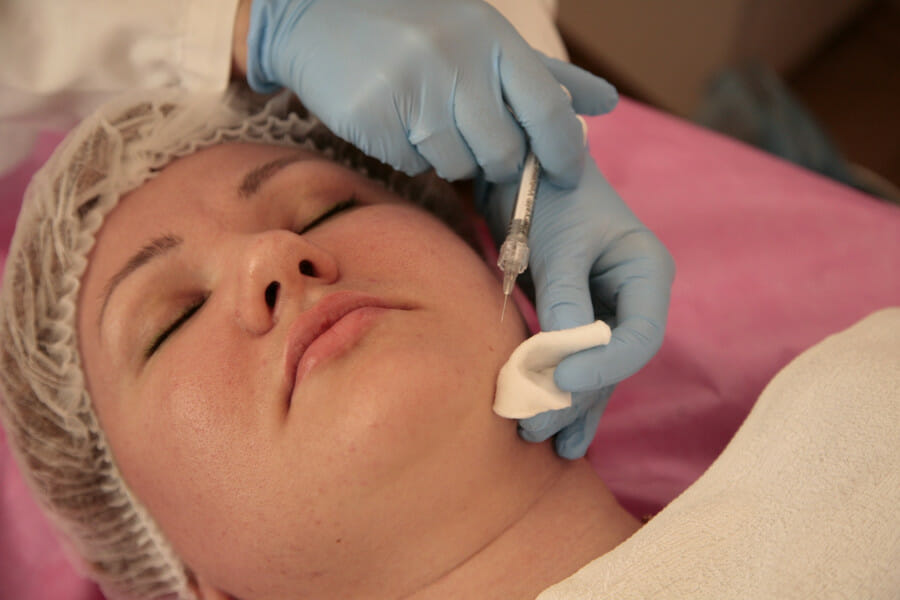You Should See How AI Will Shape The Future Of Dermatologist Visits
Whether you realize it or not, artificial intelligence is a driving force in the beauty industry at the moment. Utilizing machine learning, brands are able to not only recommend products to customers but also track how those products are working. However, nowhere is the tech more viable than at the dermatologist’s office, where it could prove to be a powerful diagnostic tool in the hands of experts (and okay, maybe on a Snapchat filter that turns you into an 85-year-old version of yourself, too).
Before we dive into the possibilities that artificial intelligence could have for derms, it’s first important to understand what it is. For some time, algorithms—the most basic form of A.I.—have made it possible for brands to offer “customized” products for your skin’s needs. In other words, if you have dry skin, an algorithm on a website or app might recommend a hydrating product. A.I., however, takes things a step further: It’s a group of highly advanced algorithms that gets smarter over time. This means that A.I. technology feasibly could compare data from your specific type of dry skin against thousands of other dry-skinned people to spit out a tailored hydrating regimen specifically designed for you alone. This tech is being adopted by brands like Skinsei, Shiseido, Olay, and Atolla Skin Health, and soon, your derm.
Though A.I. can’t take the place of an actual dermatologist—and in our stance, never will—currently, having this technology in our pockets still has some pretty major skin health implications. For example, A.I.-driven “risk assessment” apps like Miiskin and SkinVision allow users to take photos of their moles and track any changes over time. This not only creates a personalized timeline to monitor any shape-shifting of suspicious spots, but also adds to a master library of images that inevitably helps the app to get smarter for everyone who uses it. While these apps cannot (we repeat, cannot) diagnose skin conditions, they can help keep users informed, and be like skin diaries for patients to share with their doctors during annual skin checks.
For their part, many derms are craving these tools. In a recent international survey of 1,271 dermatologists, 77.3 percent agreed that A.I. will improve dermatologic care and 79.8 percent thought that A.I. should be a part of medical training. “The combination of A.I. and teledermatology is the wave of the future,” says Ronald Moy, MD, a board-certified dermatologist based in Los Angeles. When used by licensed board-certified dermatologists, A.I. can be a helpful diagnostic tool that betters diagnoses and outcomes for patients.
As it stands, most of the current research of A.I. focuses on differentiating between benign and malignant skin lesions. In other words, differentiating between a mole that’s NBD and one that needs to be biopsied in a lab by a professional. The results are pretty impressive: A 2017 study in China used A.I. to diagnose 129,450 clinical images consisting of 2032 different diseases and compared the results with diagnostic tests from 21 human board-certified dermatologists. Researchers determined that machine learning was “capable of classifying skin cancer with a level of competence comparable to dermatologists.” And while this technology looks promising to diagnose inflammatory skin diseases, allergen exposure, and the like, we’re still quite a way off from it being used in place of professionals.
Why? According to Orit Markowitz, MD, a New York-based board-certified dermatologist who has done extensive research on A.I. dermatology, the promising results from clinical trials don’t quite hold up in the real world. While machines may be able to classify a lesion as “good” or “bad” the same way a dermatologist can in a simulated setting, they “lack the ability to incorporate context.” This prevents them from connecting the dots, so to speak. “With [a photo of] skin, you’ve got all sorts of colors in it and you’ve got environmental factors like the lighting in the room, whether or not the person has been sweating, or whether they spent the last five minutes out in the sun,” says Dr. Markowitz. “All of these variables are very confusing to A.I., and move skin imaging away from being ‘standardized,’ which means that every image being used doesn’t have all the outside information that pertains to making the diagnosis.”
While derms agree that artificial intelligence is not yet smart enough to diagnose patients on its own (it’s important to drive that point home), it will help users stay informed about when it’s time to make an appointment with a doctor—and potentially make those doctors jobs easier and more streamlined. “Patients can now go to A.I. first, and come to us second,” says Dr. Moy. A.I. may not ever fully replace tried-and-true skin-care tools—or the expert eye of a dermatologist—but it’s well on its way to making our appointments easier and more accessible, which we’re here for.
















